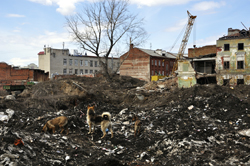An integrated approach to soil pollution monitoring
Soil and groundwater contamination represent major environmental problems worldwide. Control, monitoring and remediation are all too often both costly and complex. The soil types that are most vulnerable to contaminant migration are sandy soils, which are found throughout Europe. Because of high costs and practical limitations, the data available on contaminated sites are usually limited. A lack of data can lead to uncertainty in the site-covering assessment and an inadequate action plan for cleaning up the area and the surrounding environment. The 'Soil contamination: Advanced integrated characterization and time-lapse monitoring' (SOILCAM) project, funded by the EU, set out to improve on this situation. This project focused on designing the optimal combination of invasive and non-invasive methods for monitoring degradable contaminants in different soils. SOILCAM concentrated on two field sites in Europe that are faced with contamination issues: Trecate in northern Italy (light oil) and Gardermoen in southern Norway (de-icing chemicals). Geophysical time-lapse measurements were combined with single-point data collection methods. Geophysical approaches give an interpretation of properties, but on a relative scale. Point data however provides absolute measurement of chemical and physical properties. Combining these methods enabled the SOILCAM project to determine the different contaminant levels and their spread in the different environments of the two field sites. The experience and knowledge obtained through the SOILCAM project can provide useful input to help the implementation of Europe's policy on soil protection. In addition, as both groundwaters and surface waters may become polluted by contaminated sites, the project results are even more highly relevant for Europe's water policy and water resource management.



